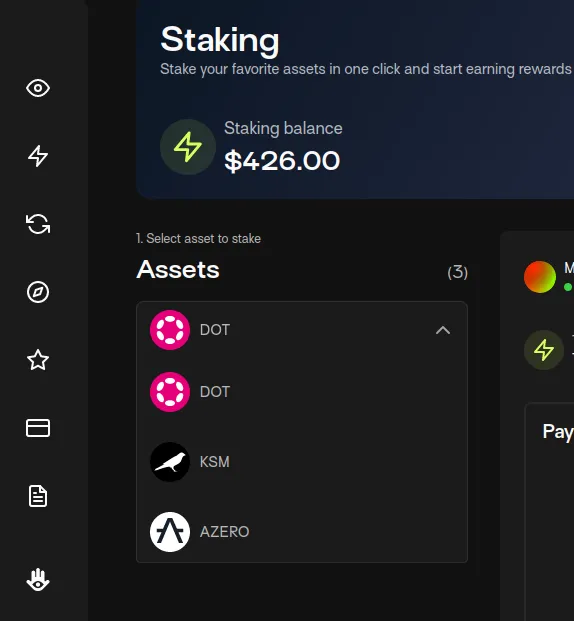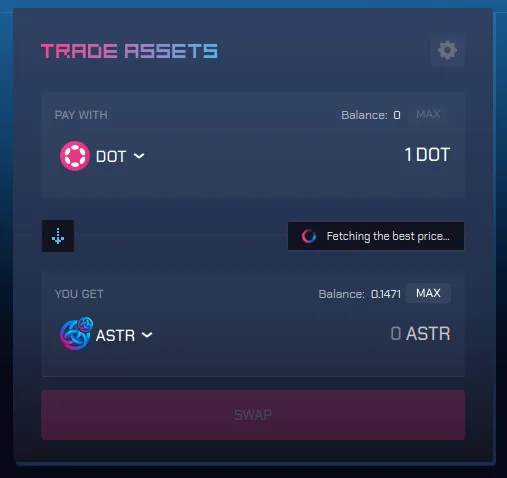In previous posts I've written about how blockchain ecosystems that have been engineered from the ground up to be modular and scalable will be stiff competition to Ethereum. In this post, I want to explain basic navigation of the Polkadot ecosystem, and how it compares to Cosmos.
It goes without saying that Ethereum deserves credit for being the first smart contract platform in the crypto world, however, affixing a bunch of sidechains to make it scale looks like patchwork, which has security and usability drawbacks.
Two natively scalable blockchain ecosystems that emerged after Ethereum are Cosmos and Polkadot. Both have a hub chain that facilitates communication and asset transfers between other chains within their respective ecosystems. In this manner, each popular decentralized app (think Crypto Kitties) can have their own interoperable application-specific blockchain.

The Cosmos ecosystem would seem to have a head start against Polkadot, at least when it comes to usability, as the Keplr wallet allows you to interact smoothly with the ecosystem. With Keplr, you can stake tokens on various chains within Cosmos, as well as vote on governance proposals for each chain.
Finding a similar interface into the Polkadot ecosystem has been a challenge, but recently an Ethereum/Polkadot wallet called Talisman, touted to have similar features, was recommended to me on Twitter. Oops, I mean 'X'.
In addition to the regular mobile options, Talisman can be installed in most popular browsers, such as Chrome and Firefox. After installation, you can create a new Polkadot wallet, or import a passphrase from an existing wallet.
Inside the wallet there are options to stake $DOT (Polkadot), and $KSM (Kusama), Polkadot's supposed "test network".

As opposed to Cosmos' Keplr, it would seem that Talisman is still missing a feature that allows you to vote on governance proposals for each chain within the ecosystem. However, from the Portfolio tab at least you can see all the tokens you own of other Polkadot chains.
The question is, how do we swap our $DOT for other tokens within the Polkadot ecosystem? For that we will need to find a DEX (decentralized exchange) and do some trading.
A quick Presearch search uncovers a Polkadot DEX aptly named Polkaswap. However, it appears to rely on the Sora chain, which has yet to win an auction for a Polkadot parachain.
After searching through Reddit, the best DEX (decentralized exchange) on Polkadot at the moment appears to be one called HydraDX. It functions similar to Osmosis in Cosmos, in that you send your $DOT tokens (using the Cross-Chain feature) from the Polkadot hub chain to the HydraDX chain to execute your trades.
From the HydraDX chain, you can use their DEX to swap those $DOT tokens for tokens of other chains within the ecosystem, such as BiFrost ($BNC), Astar ($ASTR), Centrifuge ($CFG) and HydraDX ($HDX) itself.

After executing the swaps, you can view your new Polkadot assets from within Talisman's Portfolio tab. You can leave your new tokens on the HydraDX chain, or use the Cross-Chain feature to withdraw the tokens to their respective blockchains within the ecosystem.
The Talisman wallet handles the creation of an address on each Polkadot parachain, which are all derived from your seed phrase.
Conclusion
Given the design benefits of natively scalable blockchain ecosystems like Cosmos and Polkadot I think it's only a matter of time before we see new capital flowing into them. Notably, the transaction fees are much cheaper, and the entire process is much smoother compared to Ethereum and its sidechains.
Although Polkadot has been steadily developing its ecosystem including wallet interfaces, Cosmos still seems to lead the way when it comes to usability and governance. We'll have to keep an eye on Polkadot to see if it can catch up with Cosmos in the coming months and years.
If you found this article helpful please consider giving me a follow here on Hive/LeoFinance, and we'll see you in the next post.